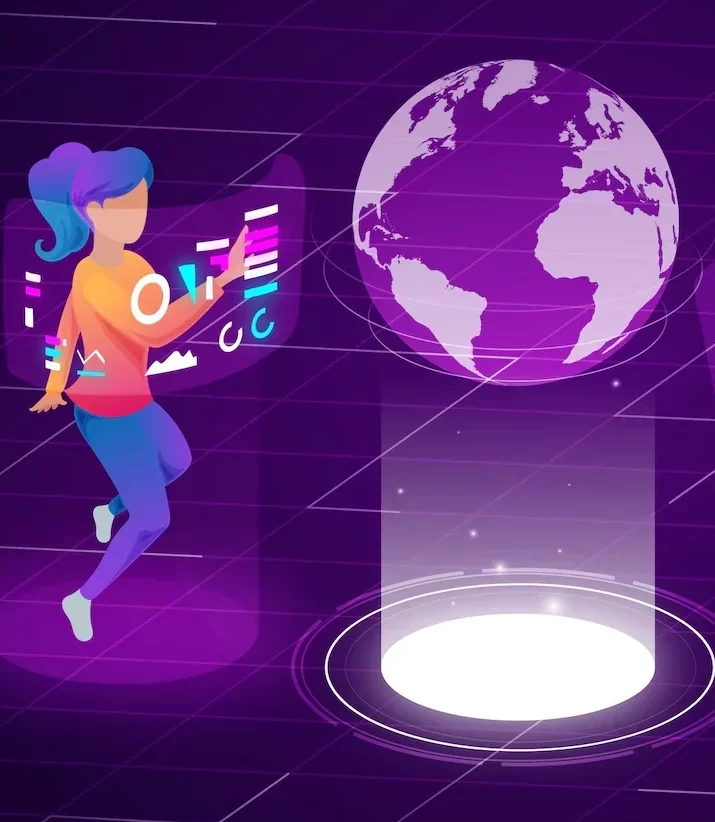
A Month in the Metaverse…
“The next platform and medium will be even more immersive, an embodied internet where you are in the experience. Not just looking at it (your screen). And we call this ‘the Metaverse’”- Mark Zuckerburg, 2021
Since Zuckerberg’s ‘unveiling’ of the term in 2021, the Metaverse has fast become one of the industry’s hottest commodities to date, and despite an unexpectedly low median year-to-date return, the Metaverse is set to become an $800 billion market by 2024. From online gaming to live entertainment, the metaverse has expanded its offering – providing a shared virtual space where users can experience augmented reality through avatars, shared screens/space and remote meetings. With so much to learn we sent our EU Marketing Manager, Cindy Crijns into the metaverse to witness the alternate reality first hand…
Cindy explains what it’s like, discussing some of her experiences and what she predicts for the future of the metaverse.
Week 1: Getting Started
Filled with excitement, I grabbed my Oculus and dove straight in. During the start-up sequence, I made a virtual border called a ‘Guardian’ to avoid running into walls, choosing a virtual home, and playing around with the controls. At first, I tried picking up blocks, remotely controlling a blimp, and throwing the items against each other. I have to say I was impressed; the same laws of physics seem to apply in this virtual world as they do in the real world.

Once settled, I tried out one of Les Mills ‘home workout’ sessions – one of the many ways the international fitness brand attracted new audiences during lockdown. While standing in front of my personal trainer avatar, the backdrop of a Chinese city with a colossal statue appears and different targets start popping up for me to punch. Virtually, I was able to workout alongside other users all over the world.
Week 2 & 3: Exploring VR
After getting to grips with the Oculus I tried out the VR. The controllers felt constricting, and I wanted to use my hands as controllers. This took some getting used to, but it felt more natural. Unfortunately, you can’t use your hands in most apps yet. I visited Anne Frank’s house in Amsterdam, went to Jurassic World in ‘Costa Rica’ and tried bungee jumping in YouTube VR.
I also linked my computer to the headset to play a survival game in the sea and was blown away by the visuals. Unfortunately, I did feel seasick after a few minutes. Words can’t really describe the experience, but you can compare it to the Rubber Hand Illusion. In this experiment, the participant sees and feels the rubber hand as his own. When the rubber hand is hit with a hammer, the participant surprisingly feels pain in his own hand.
You see the environment and your own body, and you can interact with the environment around you. This tricks your mind into thinking you are high up in the air or in the water, or anywhere else.
Week 4: Entering the Metaverse
My first ‘social metaverse experience’ was at a musical, Billy Elliot, where most people were watching, dancing, and singing along with the songs. I had a conversation with a couple of users, one who was telling me she was using the avatar of her husband to explore all the features of the metaverse. Although a rather surreal experience, it was amazing to be surrounded by virtual avatars of real life people and engage with one another.
Throughout the metaverse you can meet up with people at places such as concerts, game halls, or creative digital places where you can talk, play, create or just explore. However, walking around, and ‘choosing’ an interaction feels unnatural in these spaces – it can feel a bit awkward at first, but some worlds are fun. Events can be crowdsourced, meaning everyone can make an event and create an environment.
A lot of popups do appear before you enter a new place. They’ll notify you about the privacy settings and what you can do in case of harassment. All conversations are also recorded for security purposes.
The Future of the Metaverse
One day, I started up my Oculus, and the logo had changed to Meta. New metaverse apps also appeared, however with the same quality as before. Ironically, the Facebook app was in 2D, and has lots of bugs.
I can really see the metaverse becoming something more than what it is now. People will start building their own worlds, and making assets, just like in the series ‘Upload’ or ‘Ready Player 1’. I actually use the Oculus at least once a week, and discover something new each time I enter the metaverse. However the integration of VR, AI, IoT, social media and other technologies still has a long way to go:
Some of the issues I encountered were:
- It’s hard to navigate, and it doesn’t let you experience anything ‘new’ yet, which an existing channel couldn’t give you in a more convenient way.
- At the moment, the virtual worlds are not connected yet, and you can’t take your avatar everywhere or move to a space with the same settings.
- Payment for events in the Metaverse apps was done in fiat currency(old school money) outside of the app.
- In some cases I had to use my laptop to make objects
I’m excited to see what the future looks like, I think it’s going to be exciting!
Cindy exploring the metaverse…

Browse: Industry Insight / Life & Culture
Read Next
Find out how we can help you
With offices around the world, we can build a team perfect for your needs.

